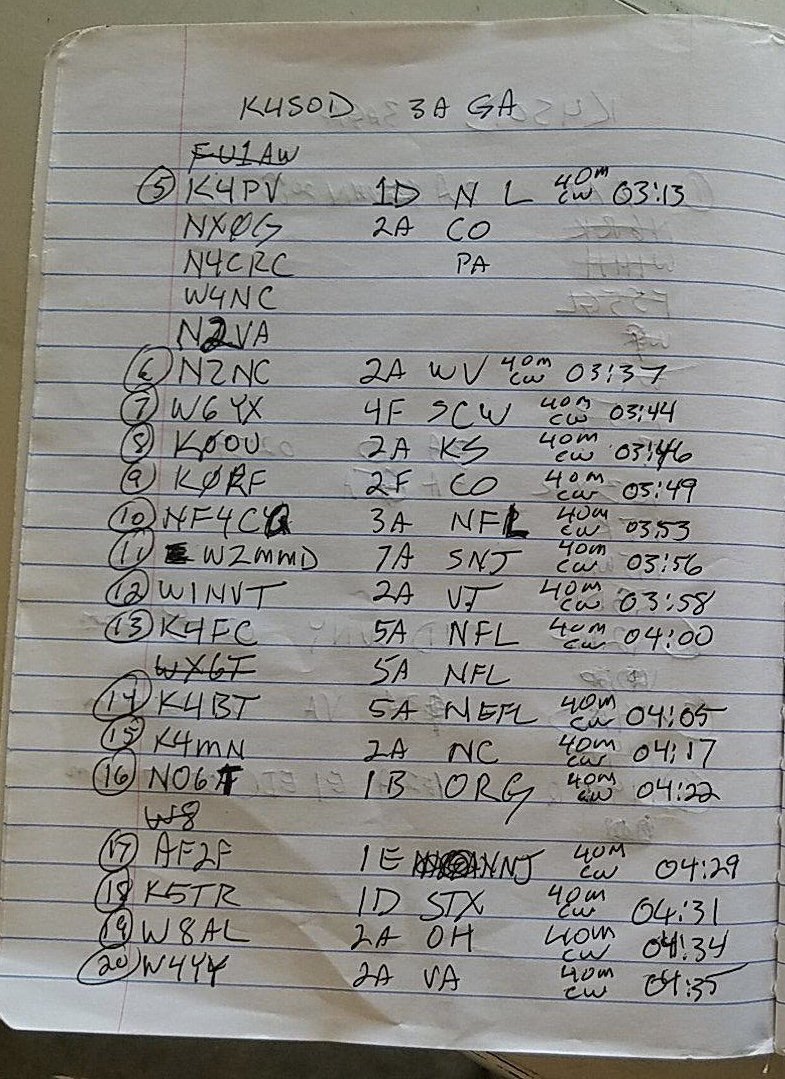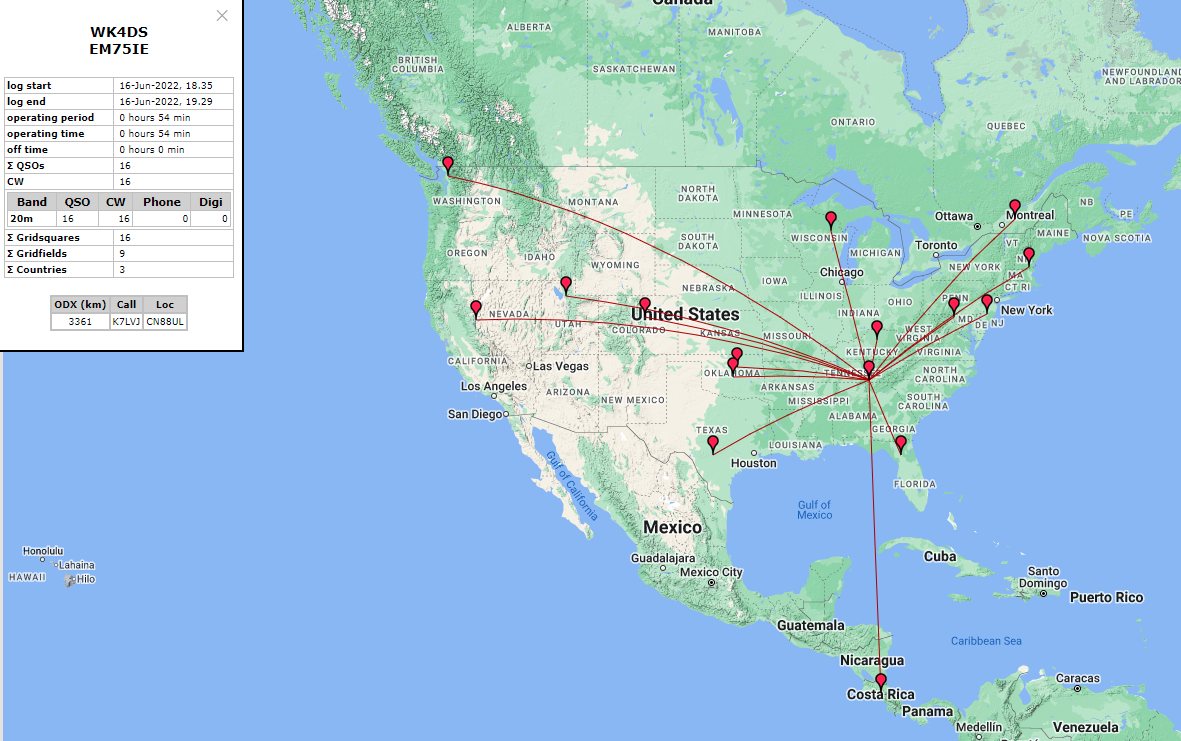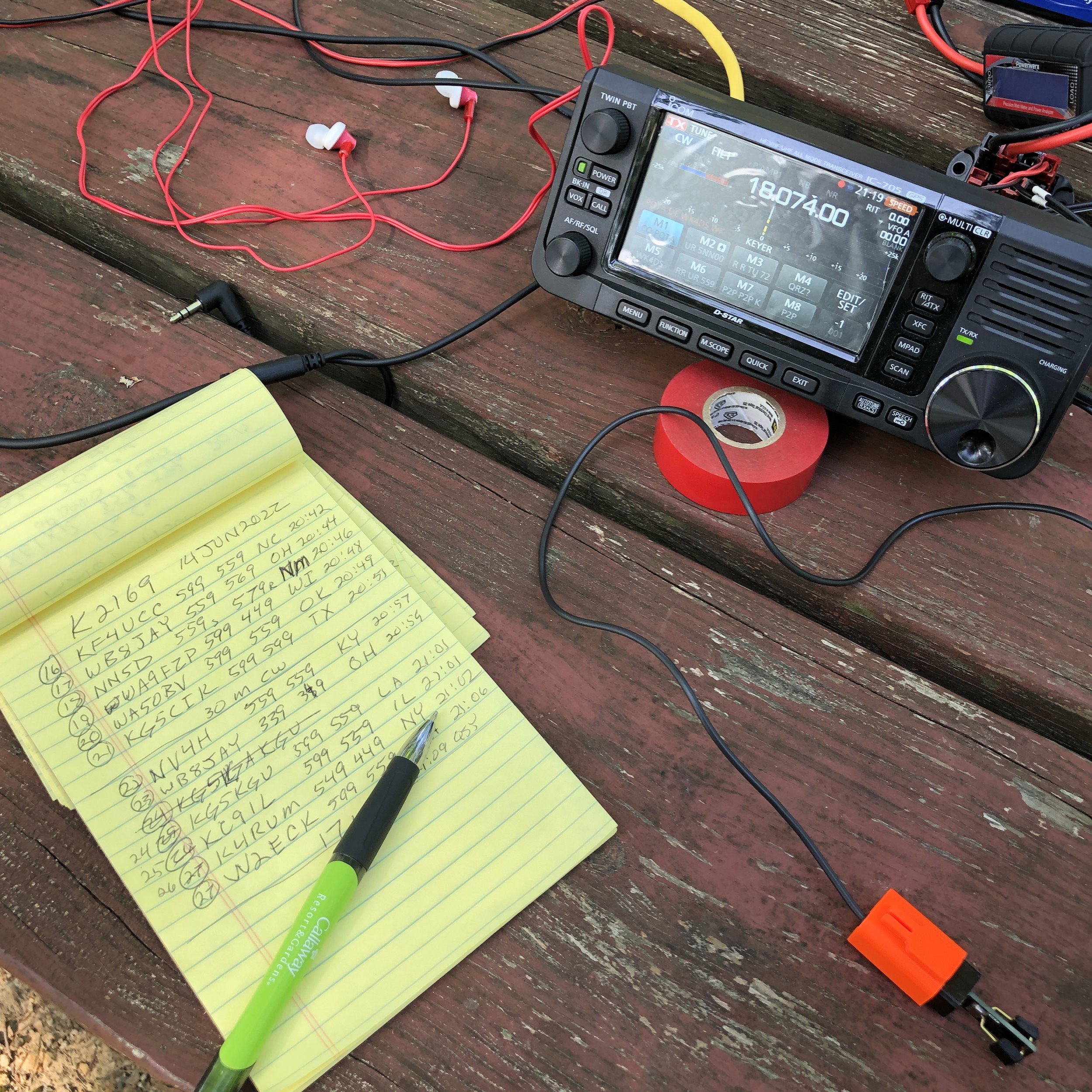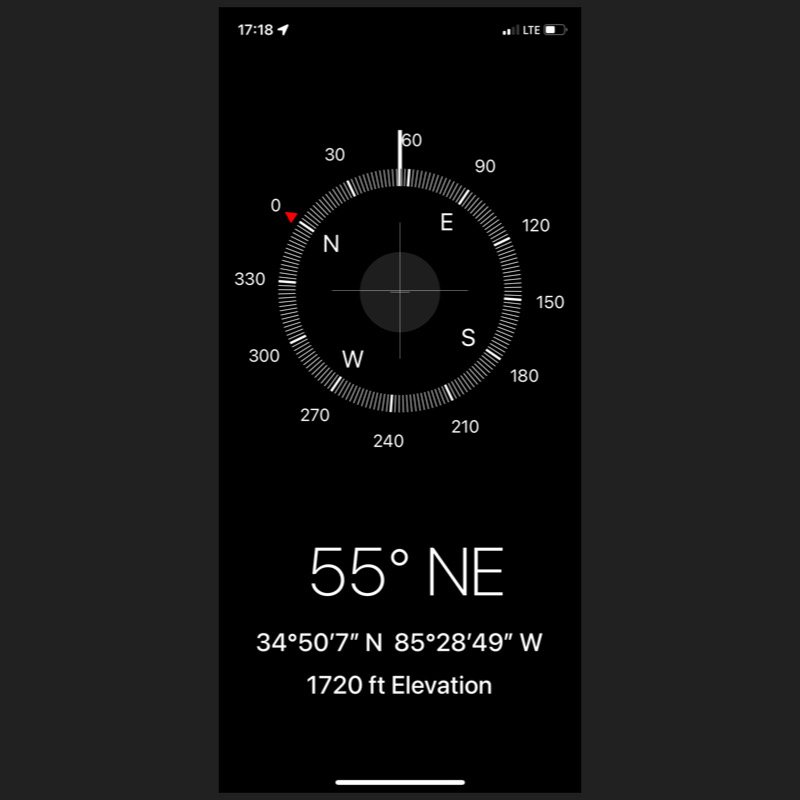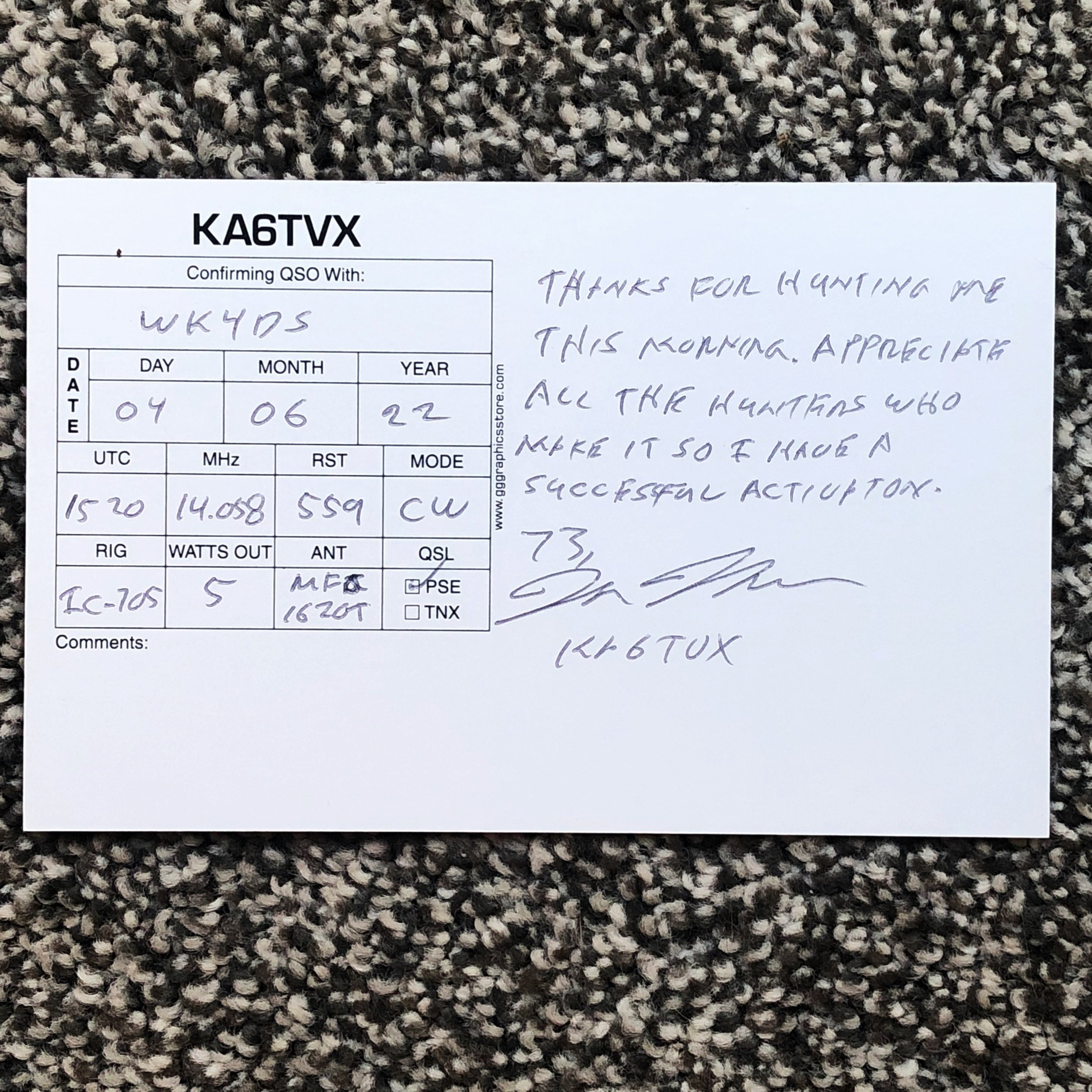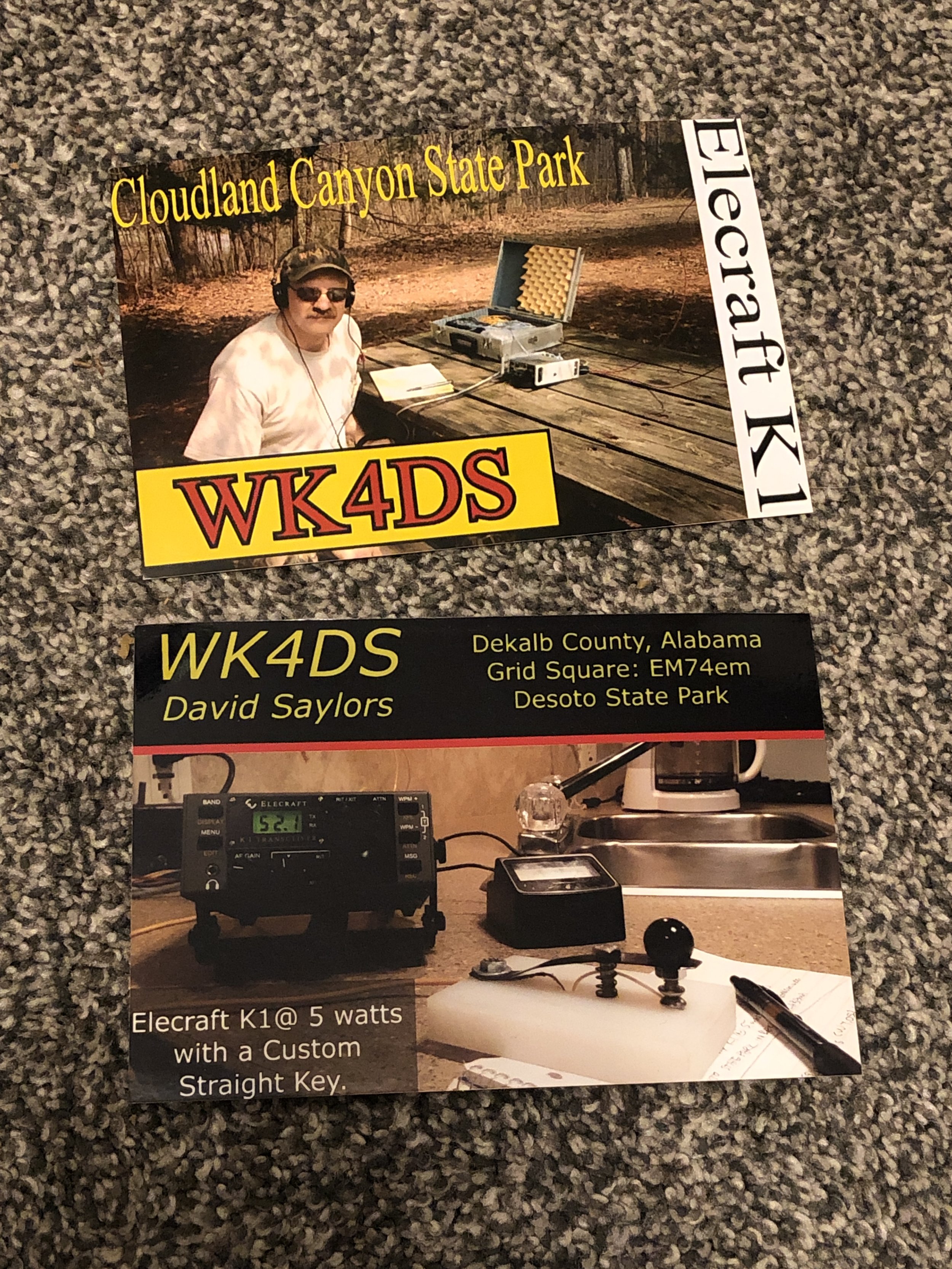Well, they work really good…for what they are.
3 DEC 2022 TenTec Argonaut 5 @ 5watts CW into the 20 meter Hamstick.
To expound on this simple statement, I have been using a 20 meter hamstick for a while now and making charts of my contacts to see how well they work by looking at the direction, distance, and minimum range of these little non-descript antennas. I keep a fairly detainles logbook too and I part of that log is RST information as well.
All of this information has been collected using QRP transmitter power of 5 watts or less to see how the other station can hear me and how many of those stations I can contact as well. To be honest, I was shocked at how good this little antenna works. It is fairly quiet (when you are not near man-made noise) and I can hear CW signals surprisingly well even on the tiny little Penntek TR-35 radio.
To get an idea of what you can do, just take a look at some of my recent AAR blogposts like Monte Sano State Park for instance. That one was done with the Penntek TR-35 and the 20 meter hamstick as well. Actually all of these recent activations have been with the lowly hamstick so far since it has gotten cold or rainy.
10 DEC POTA Activation map 20 meter hamstick and 5 watts of CW output in 30 minutes.
The above image shows what I was able to do with 5 watts and the 20 meter hamstick on a day when there was not quite so many amateurs on the air that could hear me either. I will check on some other hams and they will have tons of pile up activity and when I call CQ, it is quite different most of the time. I can occasionally get a small pile up going with just 5 watts, but I am not skilled at managing a pile up so I end up still working just about 1 per minute or maybe a little more than that. So I normally run about 1 per minute on a good day for the entirety of my activation and normally I don’t activate over 2 hours max, most of the time it is 1 hour or maybe a little less, so the maps wont be quite so buried, but they do show the effectiveness of the antenna anyway. The first QSO that day was to Puerto Rico and the longest was to California. Not bad for 5 watts and a tiny antenna!
I was going to try to come up with some sort of scientific way to measure the long range effectiveness but in the end, there just ins’t any way to do it. The only thing I have is this little map and that is a pretty good representation. You see if it is to be scientific, there has to be a control and there has to be non-subjective measurements and the test has to be repeatable. This last one is the real problem, the atmosphere changes constantly, this is why we have QSB,,, So we cant reproduce the test exactly with a different antenna since when we test the second one, it will have different atmospheric conditions. We can try, but there is no real way of knowing if the two antennas got tested with the same conditions… so it really is pointless to compare them to other antennas.
So to summarize… A hamstick antenna is a type of portable antenna commonly used by amateur radio operators. It consists of a flexible metal rod, or "stick," that is mounted on a base and can be easily taken down and transported.
The metal stick of the hamstick antenna is actually a type of coil called a loading coil. This coil is designed to resonate at a specific frequency, which is determined by the length of the coil and the type of wire used. When the hamstick antenna is connected to a radio transmitter or receiver, the radio's electrical signals are sent through the loading coil, which converts the signals into radio waves that can be transmitted or received.
One of the advantages of a hamstick antenna is that it is easy to set up and take down. It can be mounted on a car or other vehicle, or it can be placed on a tripod or other base. This makes it a popular choice for portable operation, such as field day events or emergency communication.
Another advantage of the hamstick antenna is that it is relatively inexpensive and requires minimal maintenance. It is a simple yet effective way to get on the air and make contacts with other amateur radio operators.
Overall, a hamstick antenna is a convenient and cost-effective way for amateur radio operators to communicate on the airwaves. It is a popular choice for portable operation and can be easily set up and taken down as needed.
So grab your hamstick and take to the airwaves and make some contacts!!!
David
WK4DS
72














